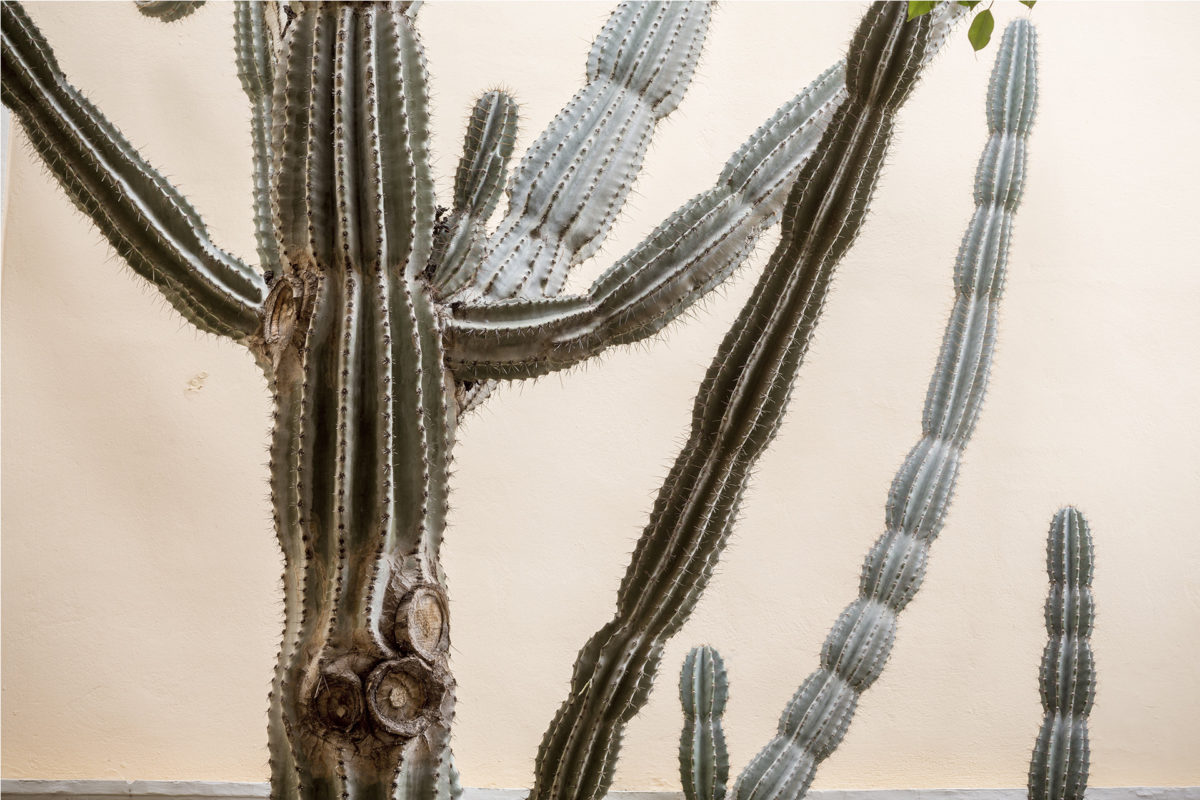A turn of events leads to the fifth generation descendant of the Delfino family converting a family heirloom to the first hotel in the town of Chania
Casa Delfino in Chania, Greece
The story of Casa Delfino is a canvas of cross of threads consisting of links, anecdotes and central figures. Giovanni Delfino was a knight and shipowner from the city of Genoa. In 1835, due to a ground storm at the Castle of Gramvousa on Crete, the family decided to settle in Chania. Between 1840-1845, he purchased a Venetian mansion in the heart of the town, located close to the harbour.
When Delfino’s daughter Margaritte came of marrying age, a suitable groom was found in Genoa. So Margaritte began the long sea voyage to meet her future husband. On the way, she fell in love with the captain of the ship. The young couple turned to Chania. The family home, Casa Defino, was given to Margaritte. All future generations continued to live in the family house, until the Second World War. Casa Delfino suffered damages during the German occupation. The house was abandoned. In 1989 Manthos Markantonakis – a fifth generation descendant of the Delfino family – renewed, upgraded, and converted it into the first luxury hotel in the Old Town of Chania.
The town of Chania
When night falls in Chania boat lamps still light the harbour, built by the Venetians between 1320 and 1356 and enlarged in the sixteenth century. The crescent-shaped western dock envelops and soothes. The dome of the Janissary Mosque overlooks the town. It reminds us that the capital of Crete did not belong only to the Venetians, but also to the Ottomans. Janissaries, as the name of the chosen troops of the Ottoman sultans. Built in 1645, the mosque – closed to worship – serves today as an exhibition space for.
On the eastern border of the port, in a former Venetian arsenal, a reproduction of a Cretan ship from 3500 years ago is exhibited. In 2004 it proved that it still knows how to sail the seas, from Chania to Piraeus. The ancient name of the city has been preserved for a long time. It falls into disuse, leaving free space for the current one, Chania, from the Arabic Al hanim. The city taken from the Byzantines by the Arabs did not maintain the administration for a long time despite settling in the territory. Together with the city of Rhodes, it shares the nickname of Jerusalem of Greece. Here East and West meet. The Byzantines, the French, the Venetians, the Arabs, the Turks, the Jews and the Greeks have left traces of their passage in the urban plan.
Lampoon review: Casa Delfino’s location
From the top floor of the boutique hotel Casa Delfino you can see the square in its entirety, as in a model. The dome of the mosque, the crystal-clear water of the port is shallow. This has limited its commercial relevance. During the Venetian period a modification of the architectural plan took place. A labyrinthine settlement reaches the Jewish quarter and west of the port, known for the arabesque variations created by the Turks on the Baroque buildings after the Venetians left.
The lighthouse, the fort and the Arsenal are also of Venetian heritage. Along with the military, merchants and architects, religious corporations also arrive, including the Dominican and Franciscan orders. They leave chapels and three Roman style monasteries with strong Baroque undertones. The Ottomans succeeded with their town planning and urban customs. They do not manage to gain approval despite the granting of privileges. The city then became the capital of the fiefdom of Crete. Mosques and hammams replace churches, together with the building of fountains. Chania, after a century of rebellions, manages to free itself, even if Crete passed to the government of Athens in 1913.
Casa Delfino’s building
Hotel Casa Delfino is located at number 9 of Theophanous. It is a Venetian Mansion. Crossing the gate, you enter the courtyard, characterized by a mosaic floor with a vase in the center. A tale of plants and marble, wrought iron and light. Two adjacent and communicating structures characterize the ground floor. From here, stairs move with several passages towards the respective floors, with the rooms.
At first it had just twelve rooms and gradually it expanded into twenty-four rooms. All rooms weave architectural heritage with contemporary design. However, some changes are subject to control by the archaeological authorities. Going up to the upper floors you arrive at the roof garden from which you can see the skyline overlooking the Old Venetian Harbour.
In the reception, a lady of Australian origin, with perfect English, illustrates the necessary information for those staying at the hotel. In the lobby you can meet Margarita Markantonakis, owner and manager of the boutique hotel. Inside the structure there is a spa – with a marble steam room, two treatment rooms, an extra-large Jacuzzi whirlpool and a soothing relaxation area – as well as a cultural gift shop.
Casa Delfino
Theofanous 9, Chania 731 31, Greece
Casa Delfino is a boutique Hotel located in the old town of Chania in Crete.




















